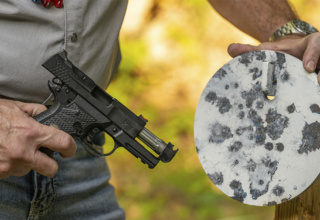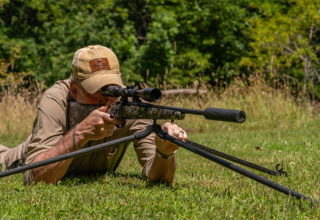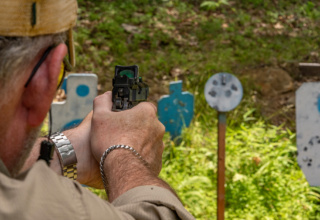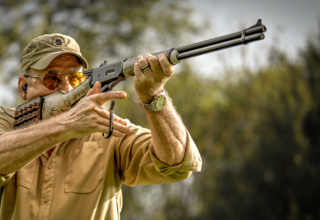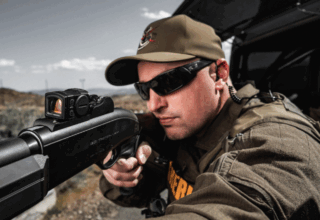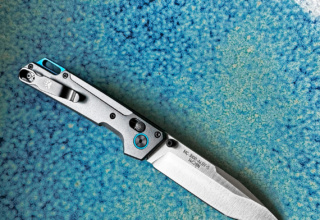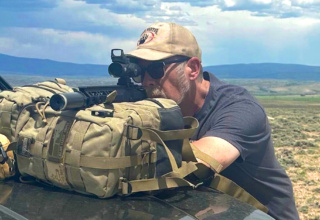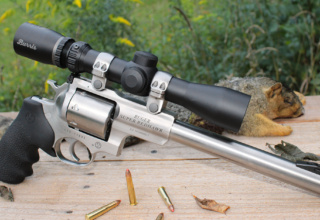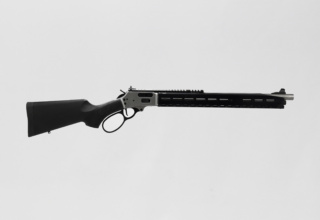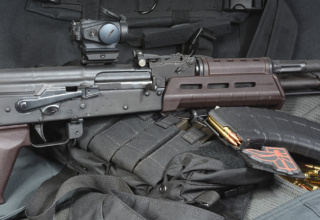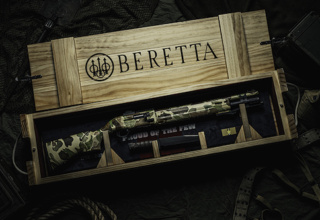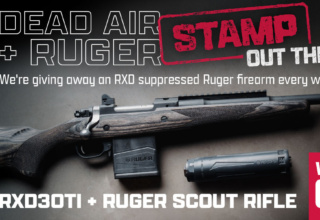While this relatively new chambering is still trying to find its legs in the marketplace, the .300 HAM’R may become the new go-to general-purpose cartridge
by Richard Mann
As we stepped into the new century, the AR-15 began its transition into the highly modular platform it is today. Since then, manufacturers and wildcatters have engineered numerous cartridges designed to enhance the platform’s ballistic appeal. Some of these cartridges have failed and others have prospered due, in part, to the marketing machines behind them and when they were introduced. One of the AR-15 compatible cartridges that does not get the attention it deserves is the .300 HAM’R.
The .30-30 Winchester was America’s first general-purpose rifle cartridge. Hunters, cowboys, and even law enforcement have successfully used the ,30-30, and in the 1920s, African professional hunter Wally Johnson even hunted lions with one. Many consider the external ballistics and terminal performance of the .30-30 to be the threshold of high-power rifle performance. So, what if .30-30 ballistics or better were achievable with an AR-15 carbine? Well, that’s where the .300 HAM’R comes in.
.300 HAM’R Origins
Wilson Combat founder Bill Wilson is a hunter and a proponent of the AR-15 platform. Bill has tried every AR-15 compatible cartridge in search of the one offering the best capabilities when it comes to feral hog and deer hunting at practical ranges. Ultimately, Bill realized the cartridge he wanted did not exist, so he created his own. Unfortunately, Bill created the .300 HAM’R in 2018 and SAAMI (Sporting Arms and Ammunition Manufacturer’s Institute) didn’t accept the .300 HAM’R until 2020. SAAMI acceptance is the key for cartridge and firearm production by multiple ammunition and firearms manufacturers.
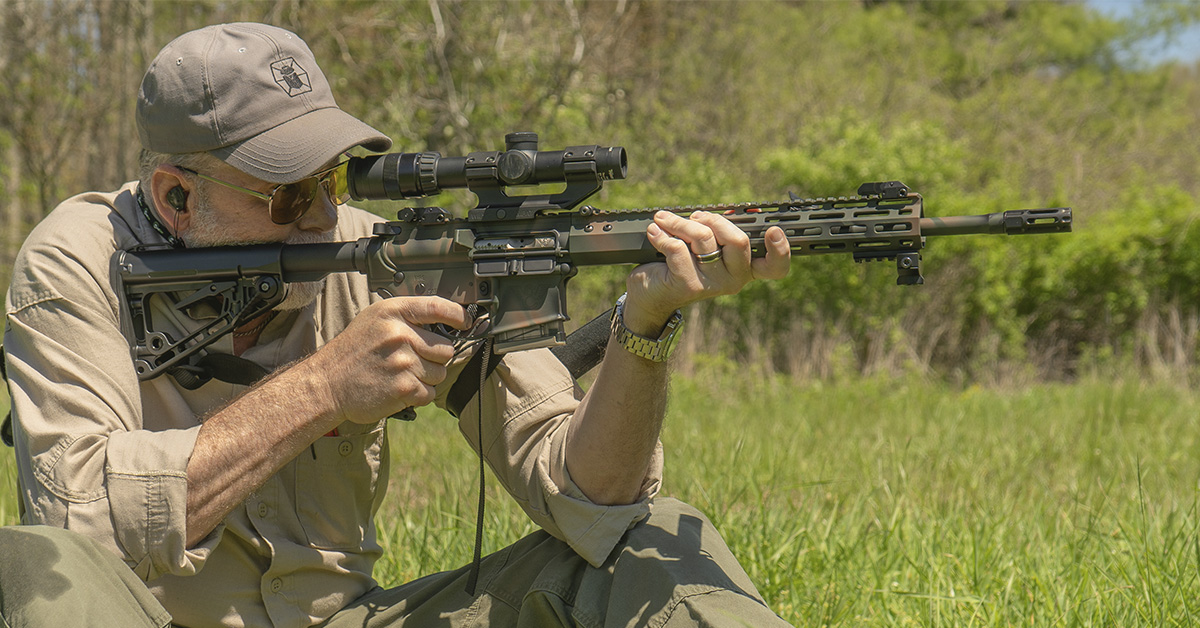
While all this was happening, AR-15 shooters and hunters were becoming infatuated with cartridges like the .22 Nosler and .224 Valkyrie designed for long-range performance, and this trend continues. Just last year, Hornady introduced their version of the .22 PPC — originally introduced in 1974 — that they’re calling the .22 ARC. These three cartridges offer the best long-range performance available from an AR-15. Timing may not be everything, but it is important, and in this current long-range obsession, many shooters do not even know the .300 HAM’R exists.
.300 HAM’R Performance
Many shooters aware of the .300 HAM’R also mistakenly think of it as being in the same class as the .300 AAC Blackout or the 7.62x39mm Russian, but these cartridges are much less powerful. Given real world velocities, the .300 HAM’R outperforms both in every measured external and terminal ballistic category. The only exception is the subsonic capabilities of the .300 AAC Blackout. You can load the .300 HAM’R to subsonic velocities, but its SAAMI-specified twist rate of 1 in 12 will not support conventional, long and heavy, subsonic-style bullets. Additionally, the 7.62×39 uses a larger diameter cases that reduces magazine capacity.
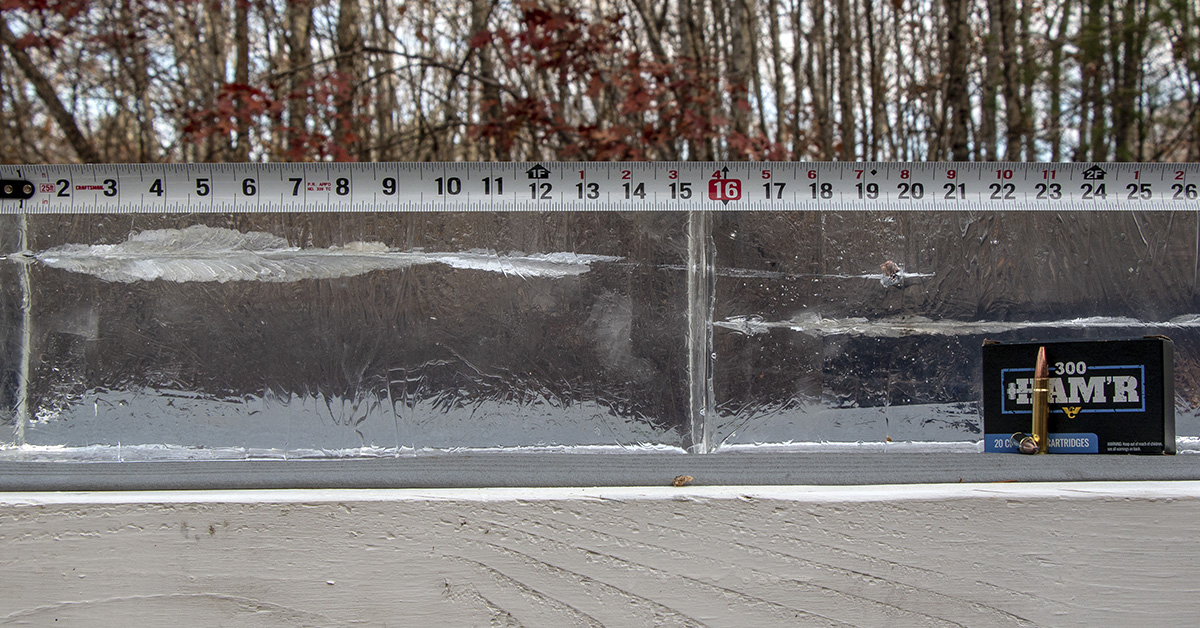
My testing has shown that from a 16-inch barrel, the .300 HAM’R will launch 110-grain bullets at 2600 fps, 130-grain bullets at 2500 fps, and 150-grain bullets at 2350 fps. Out of a 20-inch barreled .30-30 Winchester, you can reasonably expect about 2450 fps from a 125-grain bullet and around 2300 from a 150-grain bullet. These velocities are very similar, but the .300 HAM’R can use more aerodynamic bullets with higher ballistic coefficients (BCs). They retain velocity and energy better, and they shoot flatter. At real — as opposed to advertised — velocities, at 250 yards, the .300 HAM’R can hit 50% harder and drop 25% less than the .30-30 Winchester.
Politically Speaking
One facet of the .300 HAM’R that I think is especially important is how it combats the anti-gun crowd’s assertion that the AR-15 is not suitable for big game hunting. Granted, cartridges like the 6.5 Grendel and 6mm ARC are big game capable, but the fact that the .300 HAM’R uses a 0.30-caliber bullet — which has been an American hunting standard — and duplicates or exceeds the ballistics of the .30-30 Winchester (one of America’s most popular big game cartridges) totally contradicts any assertion that the AR-15 is only suited for anti-personnel application.
Available Guns
The current long-range shooting craze has not only limited the appeal of the .300 HAM’R, but it has also encumbered the introduction of .300 HAM’R rifles. Unfortunately, Wilson Combat is the only source I’m aware of. I say unfortunately because Wilson Combat only manufactures high-end firearms. For example, their Protector Series Carbine — their least expensive AR-15 — retails for $2162.95. Don’t get me wrong…you get what you pay for. My Protector Carbine in .300 HAM’R routinely shoots right at MOA with factory ammo.
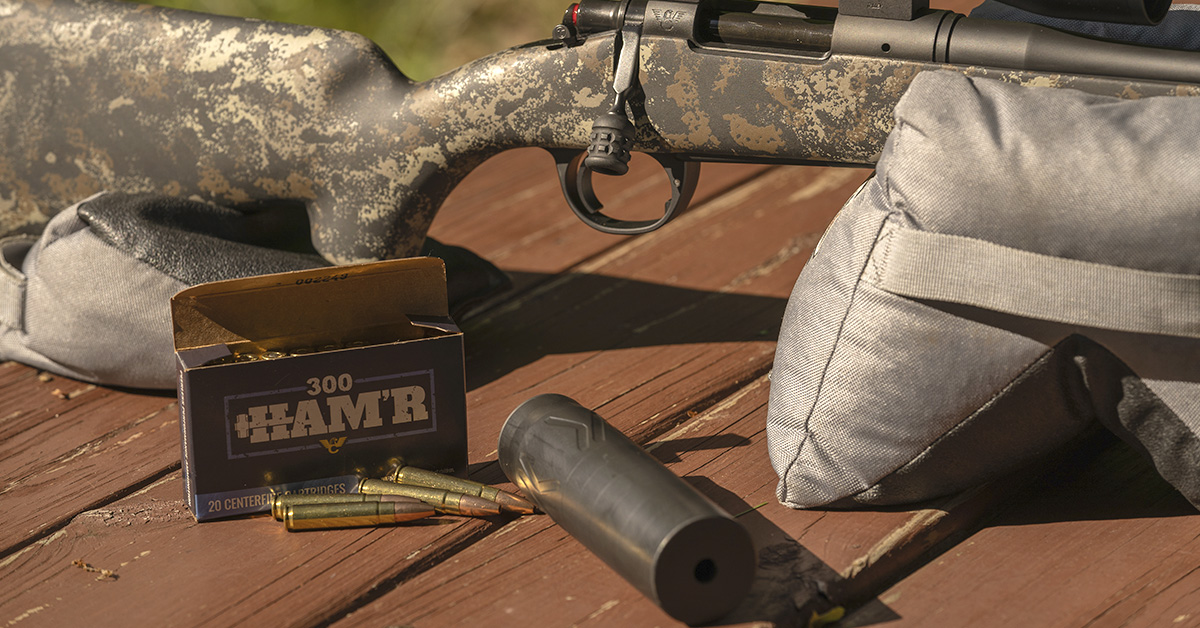
The other .300 HAM’R Wilson Combat offers is in their NULA bolt-action line. These are incredibly light rifles. With its 16-inch barrel, my NULA Model 20S in .300 HAM’R weighs only 4.8 pounds and is a solid sub-MOA performer. In fact, my handloads using 125-grain Nosler AccuBond bullets average right at a half-MOA. But these rifles are not cheap, either. The NULA retails for $2995.00.
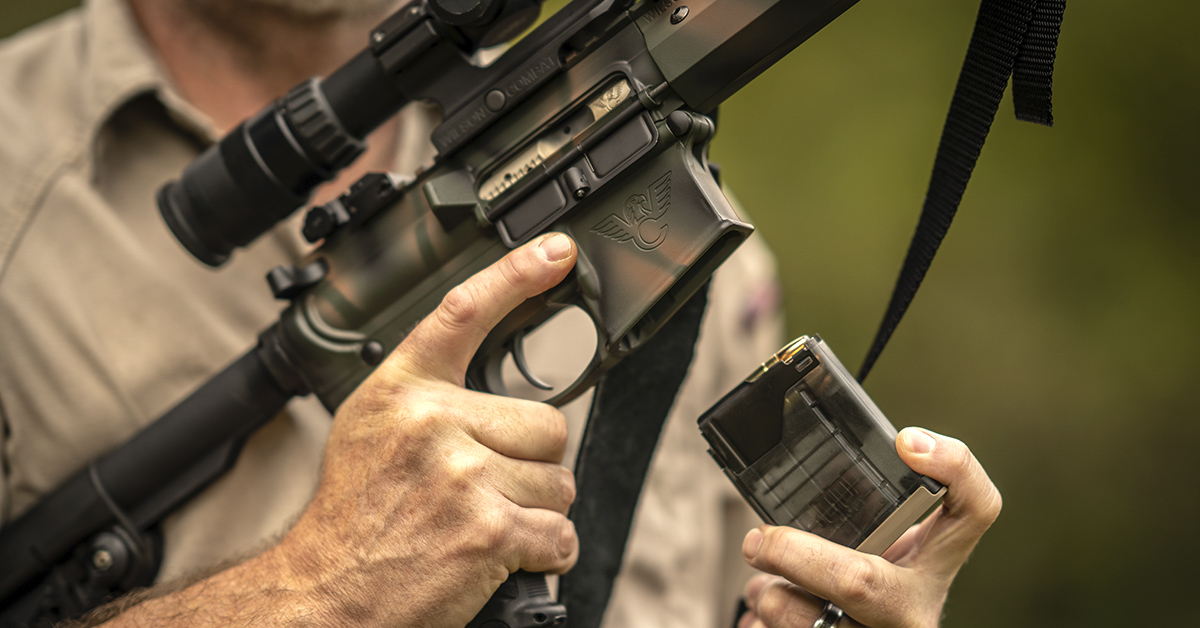
The good news is that you do not have to buy a Wilson Combat rifle to enjoy the .300 HAM’R. Wilson Combat and other manufacturers offer replacement barrels for between $200 and $300. If you have an AR-15 chambered for the .223 Remington, 5.56 NATO, or .300 Blackout, a new barrel is all you need. Of course, complete uppers are an option, too, and with either, the .300 HAM’R feeds best from dedicated .300 Blackout magazines.
Available Ammunition
Just as with rifles, .300 HAM’R ammunition is only available from a few sources. But on the plus side, among the loads offered by Wilson Combat and Lehigh Defense, there are lots of options. Lehigh Defense catalogs 10 loads ranging in bullet weight from 110 to 125 grains, Wilson Combat offers about two dozen loads with bullet weights from 110 to 150 grains, and Sig Sauer offers a single 125-grain load. I’ve been conducting some ballistic espionage, though, and know another major ammunition manufacturer will be offering .300 HAM’R ammunition in 2025.

Of course, handloading is always an option, and RCBS now offers .300 HAM’R reloading dies. Because of the 2.26-inch overall cartridge length restriction with the AR-15 magazine, some longer 0.30-caliber bullets are not compatible in the .300 HAM’R; however, with the NULA bolt-action rifle, the magazine box is 2.45 inches long and this allows for the use of a wider range of bullets. Regardless, if you’re handloading for the AR-15 or the NULA, my testing has shown Hodgdon’s CFE BLK powder to be the best option.
General-Purpose Application
When Jeff Cooper formulated his Scout Rifle concept in the early 1980s, he let a general-purpose application guide him. He settled on the .308 Winchester as the optimum general-purpose cartridge, but he also acknowledged the lever-action rifle in .30-30 Winchester served as an inspiration for his concept. Cooper felt the .223 Remington cartridge in the AR-15 substantially handicapped the platform for big game hunting. And admittedly, the pre-modular AR-15s of Cooper’s era were nothing like the AR-15s we have today. We can only imagine how Cooper would have felt about how an AR-15 — or a sub-5-lb. NULA bolt-action rifle — in .300 HAM’R would dovetail into his notion of a general-purpose rifle.
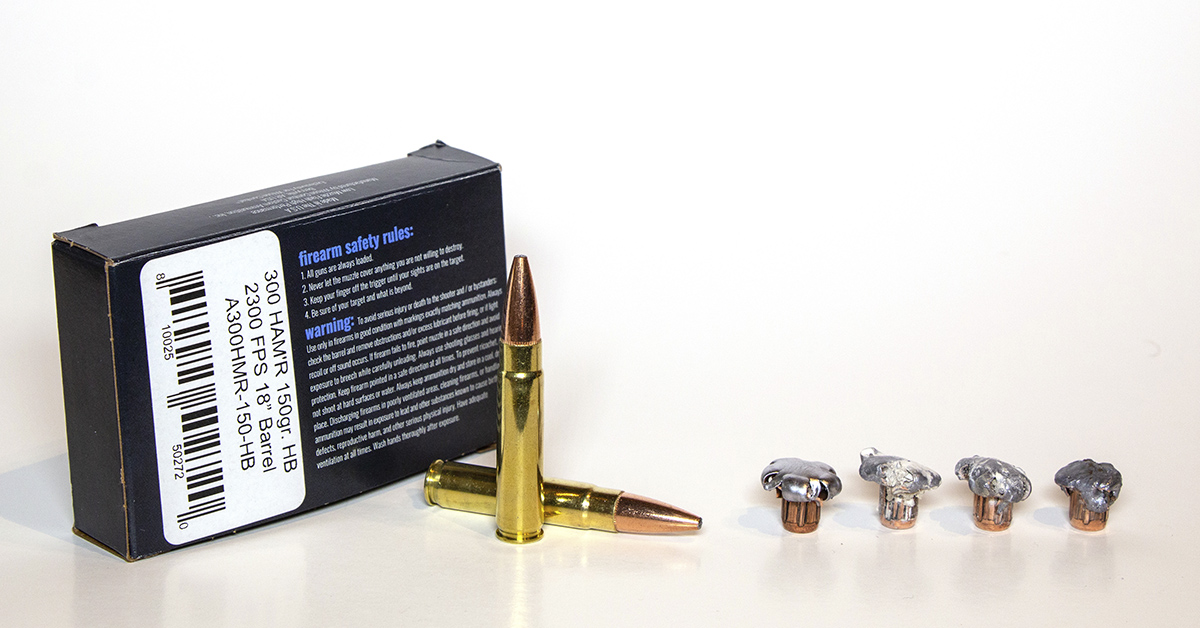
In my opinion, the .300 HAM’R holds the same appeal that the .30-30 Winchester has held for so long. It’s an ideal general-purpose cartridge, well-suited to home defense, personal protection, and for hunting small- to medium-sized big game at practical distances. No, it’s not a .308 Winchester, but it recoils less, the ammunition weighs less, and so do .300 HAM’R rifles. For most any serious and even recreational task that most shooters would ask of a rifle, the .300 HAM’R can deliver.
The .300 HAM’R Future
I’ve always had a fond attachment to the .30-30 Winchester lever-action rifle. There’s one that lives behind my truck seat — just in case. I’ll also never abandon an AR-15 in .223 Remington. One of those lives in my closet — just in case. I’m also not opposed to new, flat-shooting AR-15 cartridges. I have a Ballistic Advantage .22 ARC I like to use when I want to play at distance; however, I don’t use any of those rifles as much as I use my .300 HAM’R rifles.
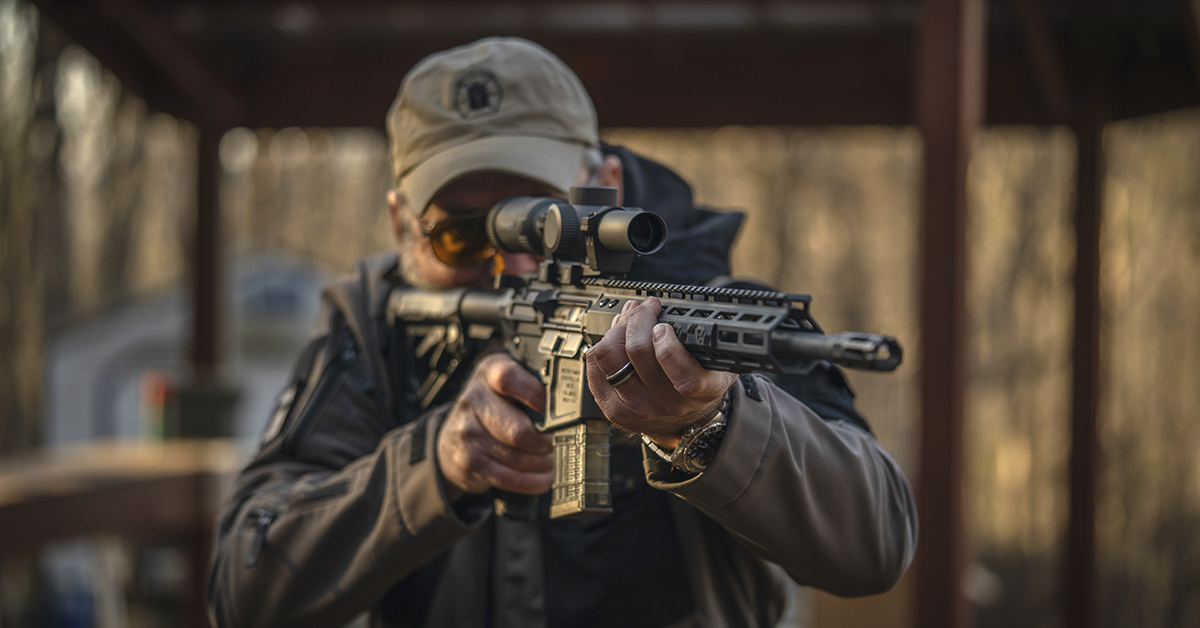
Just like the .30-30 Winchester, the .300 HAM’R is a coast-to-coast, border-to-border, cartridge. It has elevated the AR-15 to true big game status, and out of the less than five-pound NULA Model 20S, it’s a heck of a lot of rifle. I suspect that as this long-range fad begins to wane, the .300 HAM’R will find solid acceptance. After all, it is the .30-30 of the new millennium, and that’s why I have two of them.
- FIELD TESTED: The Springbok Tripod - October 22, 2025
- DIY Training: The Step Back Drill - September 5, 2025
- Understanding Ballistics Basics - August 6, 2025


